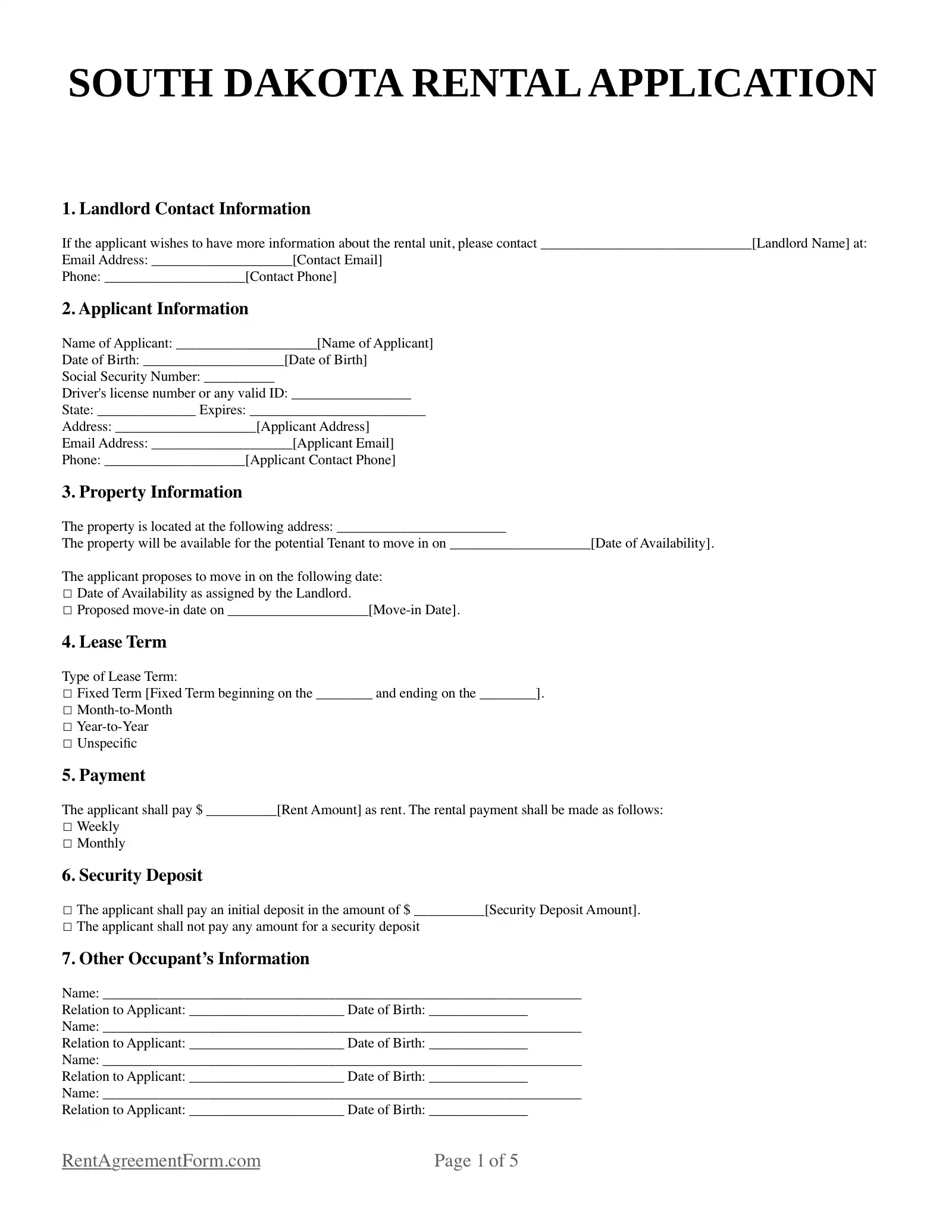South Dakota Rental Application Form
A rental application form in South Dakota indicates the prospective tenant’s interest in a particular property. This document is crucial for property owners to assess the background, criminal history, and income of prospective tenants. This legal document screens tenants and helps landlords determine whether the applicant is eligible to rent the property.
The rental application form also requires the landlord to disclose the property’s condition, possible hazards, utility arrangements, rent control rules, and other fees and policies.
Both parties must be entirely honest and upfront about the information they declare on the South Dakota rental application form. This will ensure a cordial landlord-tenant relationship moving forward, with no serious issues emerging unexpectedly throughout the lease period.
The rental application form must indicate that the applicant grants explicit written consent for the landlord to perform a thorough background check and evaluate their credentials.
Upon submission of the application form, the landlord can closely evaluate all prospective tenants and choose the most suited one for their property.
Note that the Federal Fair Housing Act protects prospective tenants from being discriminated against because of their gender, race, religion, familial status, and more.

Rental Application Fee
In South Dakota, there are no statutory limits on the amount a landlord can charge for the rental application fee. This non-refundable amount will cover the costs of checking references and other expenses for a background check.
The average application fee in the United States is $30, but exact amounts vary depending on administrative costs and third-party agencies performing the checks.
Security Deposits
The law in South Dakota stipulates that the maximum security deposit is one month’s rent. But if the landlord can prove that the tenant’s circumstances or lifestyle would be a risk to the property, they can add additional charges that both parties agree to.
The landlord can use the security deposit to pay for any damage on the property beyond the usual wear and tear. This includes unpaid rent and any other amount of money owed by the tenant to the landlord.
Tenants must check the property with the landlord to review its condition before they agree to pay the security deposit. Both parties should sign the agreement that includes the state and condition of all furnishings, fixtures, and other important areas of the property (South Dakota Codified Law § 43-32-6.1).